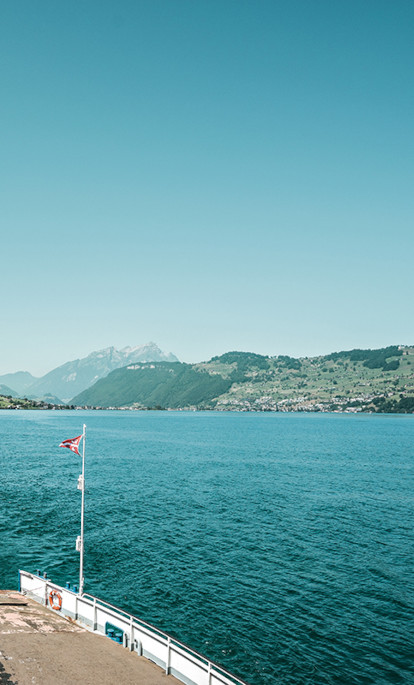Switzerland has four seasons, each with its own attractions. You can ski and snowboard in winter, go city sightseeing in spring, hike the trails in summer and enjoy the wine and fruit harvests in autumn. This means the best time to visit Switzerland really depends on what you want to do, so let’s take a closer look.
January – Crisp and Cold
While temperatures vary depending on your destination, January is generally the coldest month of the year with the average daytime high in Zurich just 2°C and -2°C at night. This is a popular time with skiers and boarders, who hit the Swiss Alps in full force. In fact, most places across the country will get at least a dusting of snow, except for low-altitude areas near the Italian border. Pack warm winter clothing like thermal underwear, gloves, woolly socks and waterproofs.
February – Snowy Slopes
February brings slightly warmer weather to Switzerland with the afternoon high increasing to 6°C. With the low still at -2°C, it’s usually snowy. The days are getting longer, so you’ll have more daylight to enjoy the slopes and the sights. It’s crisp in the mountains with lots of blue sky, and the ski season is in full flow. You’ll need to pack similar clothing to January, with plenty of layers topped with a warm coat. Because you’re likely to experience brighter days, be sure to bring sunglasses and don’t forget the sunscreen.
March – Head Inside
Spring is on the way, as are the warmer temperatures, with the mercury climbing slightly to 11°C in the afternoon and the low now at 3°C. If you’re hoping to ski, you’ll still be able to find snow at higher-altitude resorts, along with the increasingly warm rays of the sun. While it’s cold and wet across the rest of the country, March can be a good time for indoor fun. Outside of the mountain resorts, it’s low season, which frees up the towns and cities, leaving places like Zurich and Geneva less crowded.
April – Wet but Warmer
Come April, the skis are packed away and the cows come out to play. This is when the pretty, flower-strewn meadows and the first fair-weather walkers arrive. The average high increases to 15°C although nights and early mornings will still be chilly, with lows of 3°C. As the month progresses it will get increasingly warmer, although rain is common, so you be sure to throw in a waterproof jacket.
May – A Milder Month
May is an unpredictable month in Switzerland, with afternoon highs averaging 20°C while the low has increased to 7°C. There is a good chance of rain, so pack a waterproof jacket alongside your sunglasses. As the weather turns increasingly pleasant and mild, the country opens for a new season of outdoor pursuits such as hiking, boat rides, paragliding and cycling. To see Switzerland in all its spring splendour, visit the quaint town of Interlake, surrounded by the blue waters of Lake Brienz and the majestic Alps.
June – Warming Up
June is likely to be warm with the average high climbing to 21°C. This month is the calm before the storm, presenting the chance to get out on the trails before the peak crowds arrive in July and August. Hiking in Switzerland has become a bucket list item for many people and some of the country’s prettiest places can only be found on foot. It will still be cool on early morning hikes, with lows of 11°C, but afternoons will likely be warm. And as the weather heats up, so does Switzerland’s events calendar with the first of the summer art and music festivals happening in June. For those after outdoor pursuits in the sunshine without the crowds, June may be well be the best time to visit Switzerland.
July – Swiss Summer Bliss
July is start of the peak summer season. The afternoon high rises to 24°C, while the rainfall decreases. It’s the perfect time to enjoy the open-air music festivals, hike in the mountains, and take advantage of the lakes, which become popular places to hang out and escape the heat.
August – Head for the Lakes
While the average high is still 24°C, in many places it rarely dips below 30°C, making swimming in one of Switzerland’s crystal-clear lakes especially tempting. There’s more rainfall














